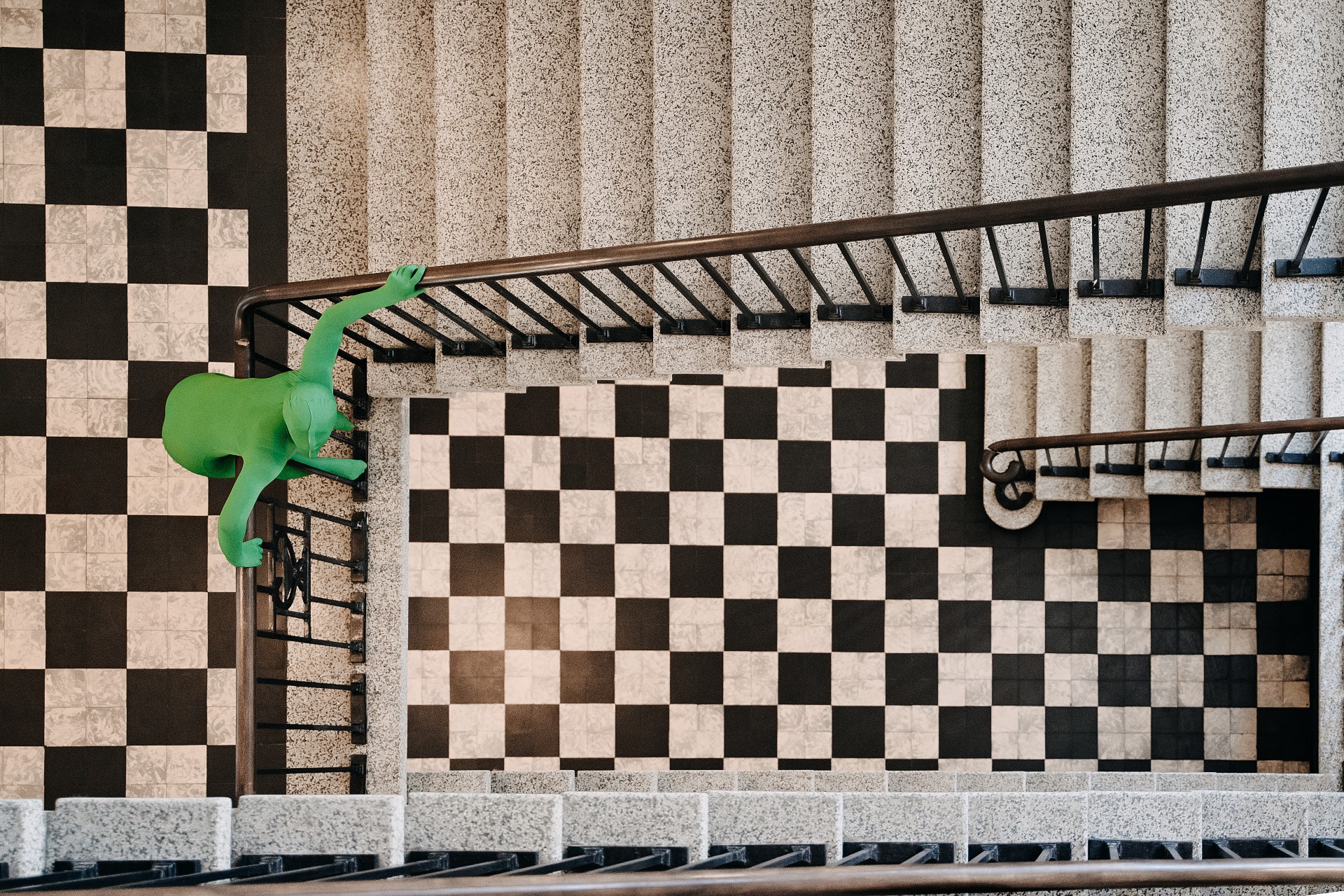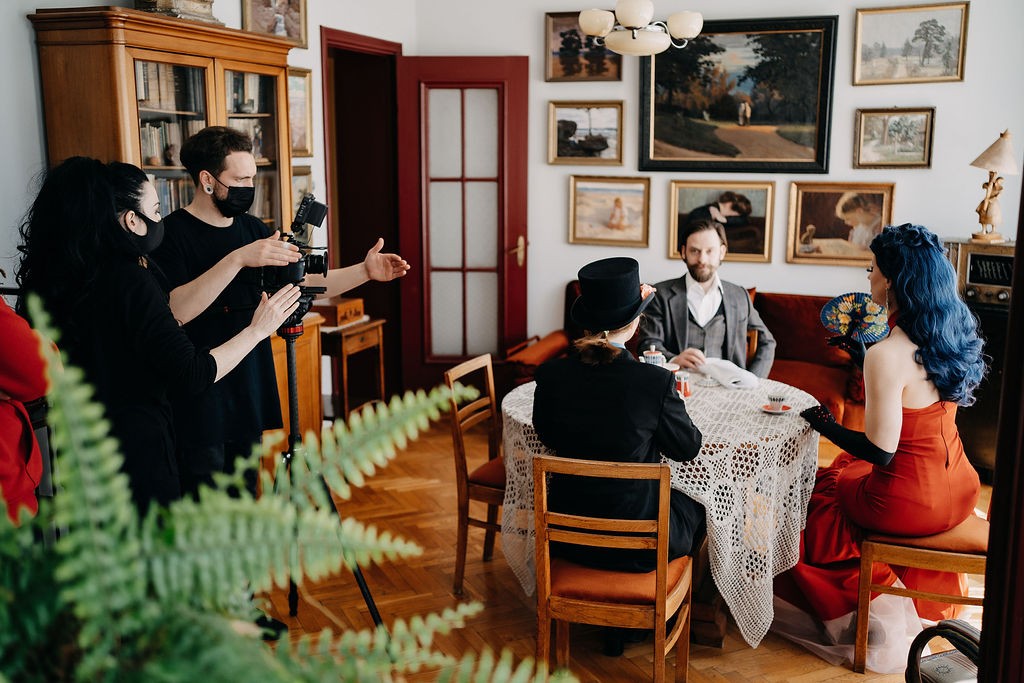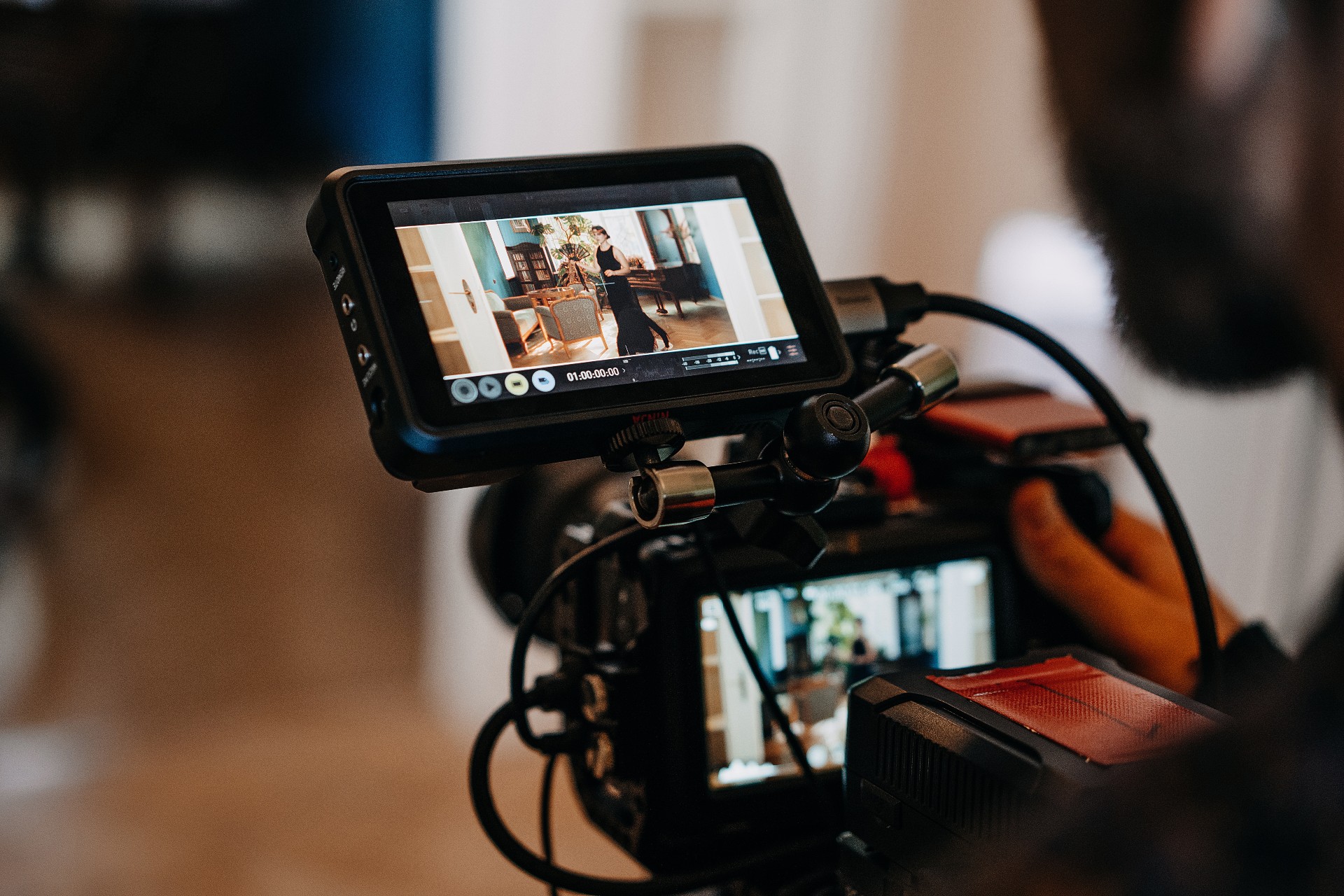
Architectural historian Dr Viltė Migonytė-Petrulienė will undoubtedly remember 2022 for the rest of her life. Curator of the architecture and heritage program Modernism for the Future of the project “Kaunas – European Capital of Culture 2022”, together with her team of assistants, this year turned the Kaunas Central Post Office into the Architecture Centre for several months, spread the message of optimistic Kaunas modernism all over the world, and now it is waiting for the world right here, in Kaunas. In September, the city will host the international conference Modernism for the Future. It will also include the premiere of a very special film, “Folds/Pleats”. What’s more, at the end of last year, the academic also published a monograph “Weekend Cities and Suburbs” about resorts in Lithuania! This time we left the topic of holidays aside – there was barely enough time to discuss the modernist movement, which has been rapidly growing for five years now.
What do you personally consider to be the greatest success of this program? Maybe it’s one small event, or maybe it’s your own new skills, acquaintances or even future projects?
Personally, the experience. I have never worked on a more interesting project, with so many opportunities and challenges, with such a professional team. Of course, not all the activities of the program had a smooth start, and not all the nights were for sleep, but all the experiences are worthwhile and precious. I would like to believe that our partners and the citizens of Kaunas will take away a similar feeling. When I started curating Modernism for the Future in 2018, I already saw how well the program had been strategically designed, how the target groups of activities had been logically distinguished, covering different audiences, how ambitious the goals had been set, and how the only thing left to do was to think about the means to achieve them, to try out new tools. It is true that we did not have a magic formula for success; we did not know what would work and what would not in our environment, and in the context of the European Capitals of Culture, exploring and interpreting architecture and heritage was not and is still not a common practice.
The biggest motivation was that Kaunas already had international recognition, having received the European Heritage Label in 2015, and various community initiatives such as guided tours etc. were gaining momentum alongside this. It was both a gift and a responsibility at the same time. We invited cultural organisations from Kaunas and other cities to share it. Despite the fact that we have been working hard for all five years, the first strong feeling that the program was really working was after the initial call for partners to apply for all the Capital of Culture branches. I feel that the idea of Modernism for the Future is a real success when I finally attend the partners’ events this year. All of them are a seamless story of the success of the program and of different experiences. I have great faith in that.
Which partner events will you remember as highlights?
All of them! I couldn’t have dreamt of better content for modernism. The partners’ programme covers a very broad audience, with different interests and age groups. From projects for architecture professionals and enthusiasts, such as: publishing a book on interwar architect Arnas Funkas (M. K. Čiurlionis National Museum of Art), a tactile interactive pavilion of architectural cognition created with the blind and visually impaired, the exhibition “Architecture of Lust” decoding the lustful secrets of the modernist city, or the Kaunas Architecture Festival (Lithuanian Architects’ Union), which brings together intercontinental architectural ideas, and the International Summer School (KTU), which brings together the most relevant themes of global contemporary architecture… To exhibitions presenting impressive photographic personalities (Kaunas Photography Gallery), art objects inspired by the stories of modernism in the city’s public spaces (Lithuanian Artists’ Union), presentations, lectures, exhibitions aimed at expanding the geographic boundaries of modernity, performances (Kaunas Artists’ House), experiential tours (“Ekskursas”, Kaunas Dance Theatre “Aura”), or forward-thinking music festival at a metal factory “Optimismo”, and world music concerts (GM Gyvai), spread across various spaces in Kaunas and Kaunas district.

In January, the official start of Kaunas – European Capital of Culture was kicked off with the opening of the exhibition “MoFu 360/365”. In the context of the international exhibition and the whole program, the number 360 symbolises all possible perspectives on modernism: cultural, political, economic, and so on. Meanwhile, the number 365 refers to our attention to everyday heritage. How did you and your team manage to implement the 360/365 formula?
I have always seen the program as a platform for community and cross-sectoral heritage experiences, where we all learn, have the right to make mistakes, disagree, discover and co-create, and share the responsibility to make modernism even more understood, noticed and appreciated. I must confess that working directly with the community has never been a comfort zone for me, so I am extremely grateful to the team members who have taken the lead in reaching out to the local population. Žilvinas Rinkšelis and his team of volunteers have visited many modernist apartments, filmed dozens of interesting stories, and described hundreds of buildings on the Modernism for the Future website. In this way, the concept of the heritage of everyday life, encoded in the numbers 360/365, gradually took on a clearer form.
Yes, the number 360 means all possible perspectives of modernism: cultural, social, etc. They were touched upon not only in personal conversations with residents and public discussions but also in artistic interpretations made by artists from different fields of study about 20th-century architecture and the complexity of ideas that it represents, as well as about the different fates of buildings and society. In other words, the collected authentic testimonies about Kaunas Modernism became an inspiration for the creation of a new narrative and language that could be understood by a wider audience.
Meanwhile, the number 365 is intended to draw attention not only to the representativeness of churches, museums and other institutions but also to the architecture of everyday life: residential houses, industrial buildings or places of leisure. Was the language of modernist interpretations interesting to everyone? It would be naïve to think that everyone took in the heritage of this period and fell in love with it, just as everyone read or admired the messages conveyed by all the creators. This did not demotivate us but made us think more – how else can we do things? Where can we find the funds for the ideas?
I am glad that fortune was not standing there with its back turned and not far away, just waiting for a bigger effort, which paid off all four times with additional funding from Creative Europe and Interreg Europe. This has opened the door to international partnerships, inviting and welcoming artists from Ukraine, Belgium, the Czech Republic, Israel and other countries to tell a more coherent story of modernist architecture as a phenomenon experienced by Eastern, Central and Western European cities. There is also great support and enthusiasm from foreign embassies and the Lithuanian Cultural Institute. The result is still visible today. Right now, the Ukrainian artist Lia Dostlieva is visiting Kaunas for the whole month of August. Under the guidance of Monika Amyra Pociūtė, Lia is designing a futuristic costume that will combine the identity of the two cultures, in which she will also leave a message about the feeling of (at)building/(at)creating the future of her country.
How would you assess the involvement of Kaunas residents in their environment? Has it increased thanks to the initiatives of Modernism for the Future and its partners – excursions, exhibitions even for children, articles, videos, projects with dance and other arts… or has it sparked a greater love for the city? And is it love, or empathy, that is the feeling to talk about when it comes to the relationship between the city and the individual?
Kaunas is waking up and is certainly becoming more open to new experiences. I believe that inertia has been created by the activities of partners and the initiatives of citizens. Everything matters – the aforementioned excursions, international photography and architecture exhibitions, dance performances, intelligent contemporary and world music concerts, sculptural compositions that open up in unexpected spaces in the city, etc. Although there is a great deal of high-quality cultural content on the theme of architecture this year, I sometimes think that modernism as a phenomenon has a diminishing role to play here. Especially in the New Town, the cultural legacy of the interwar period is an ideal setting, which sometimes inspires, complements or assists, and sometimes helps to fulfil or reinforce the idea of the project, and adds a unique and significant touch to the art form. It clearly helps to increase knowledge, cultivate curiosity and understanding, and see the possibilities, which leads to a stronger emotional connection with one’s surroundings. This leads to practical success in small or large heritage conservation processes. Some of them are linked to personal stories of love for modernism, others to political will and the pooling of intellectual resources.
One of the most anticipated events this year has been postponed because of the war in Ukraine. It is the inclusion of Kaunas modernist architecture in the UNESCO World Heritage List, which hasn’t happened because the UNESCO session in Russia was cancelled. What is the mood in your team regarding this issue?
Let’s be optimistic, though. While we are waiting and hoping for the capitulation of the aggressor, nobody is tying their hands to work together towards the preservation of heritage and the creation of a sustainable, quality city. UNESCO does not add value to the city, only notoriety, so it is the daily contribution and efforts of everyone that are important.
One of the highlights of the program, the stop motion film “Folds/Pleats” by Aideen Barry, has already been screened at several festivals abroad. What kind of response has the film received? What exciting things are planned for the premiere in Kaunas?

Firstly, I am glad to announce that the film, which has been screened since the beginning of the year on the big screens in Canada, England, Ireland and Italy, will finally be presented in Kaunas, at the historical Romuva cinema in September.
The organisers of the international festivals shared very positive feedback, and many spectators googled flight tickets to Kaunas right after screenings, as they became interested in the city’s history and cultural programme. Before the screenings, the audience was invited to read Sandra Bernotaitė’s text, in which the writer skilfully arranges the main accents of the film’s narrative, answering the question of what the role of architecture is as the main character and why the surrealistic aesthetics of the moving pictures is used, which arouses surprise and smiles. The premiere in Kaunas will be followed by an interesting conversation with the film’s director Aideen Barry, Sandra Bernotaitė and Rita Stanelytė, the film’s communications specialist who helped the film enter international festivals.
The project is also presented as a unique creative process that brought together more than 600 local people and professionals over a period of two years. The production of the film was accompanied by a pandemic, so its management was a huge effort for our team, and especially for the producer Ugnė Marija Andrijauskaitė. Enthusiasts of music, creative writing, stop-motion animation, and even food production students from the Kaunas Food Industry and Trade Training Centre, who, by the way, will invite the audience to enjoy a huge modernist cake after the screening of the film, were invited to get involved. Those who will not make it to the national premiere on 21 September will be able to see the film on 22-24 September. In the cinema foyer, viewers will be greeted by an experiential installation created by Aideen Barry, Povilas Vincentas Jankūnas and Mindaugas Barnatavičius.
Could you also reveal more about the upcoming Modernism for the Future international conference? How has it grown since the first edition in 2018?
The first conference, which was also the symbolic opening of the program, focused on the perception of the cultural value of the heritage of modernism and the search for the uniqueness of Kaunas, especially by drawing on the experiences of foreign countries. Among them, the video projects of Aideen Barry, who then visited Lithuania for the first time, were presented, as well as projects dedicated to sensitive social issues, contemporary creative and educational methods of heritage cognition applied by Sharon Golan Yaron at the Tel Aviv-Liebling House, discussion of the topic of national modernisms, which is also relevant to the Lithuanian context etc.
This year’s conference “Modernism for the Future. Interpretations” is scheduled for 21-22 and is the symbolic closure of our program. We will have much more to share ourselves. For five years, hundreds of citizens of the city and the district, dozens of cultural organisations and artists have worked, taught and given incredible experiences in the modern cultural heritage laboratory, and I believe that the two-day programme will be of interest and relevance to everyone.
The programme will span from creative workshops on the accessibility of heritage, to seminars on the role of contemporary interpretations based on the experience of Kaunas – European Capital of Culture, as well as topical conversations on the subject, presentations and discussions in the Žalgiro Arena with renowned New York artist, architect and heritage conservationist Jorge Otero-Pailos, architectural critic and researcher Grzegorz Piątek, architect, architectural historian, curator of architecture and art projects Ievgenija Gubkina, and many others. The programme also includes the opening of two exhibitions, the presentation of Marija Drėmaitė’s book on Arnas Funkas, and the premiere of the aforementioned stop-motion feature film. The symbolic farewell will therefore be very optimistic.
What plans does the Modernism for the Future team have for 2023 and beyond?
It is very difficult to talk or dream about the future, even if it is the near future, when there is so much work left to do with Vaiva Marija Bružaitė and other colleagues. I know that all modernists, whatever they do in the future, will have a special personal relationship with heritage. I can only wish them all that they do not lose their enthusiasm and do not get tired of sharing their lessons and experiences with others.

